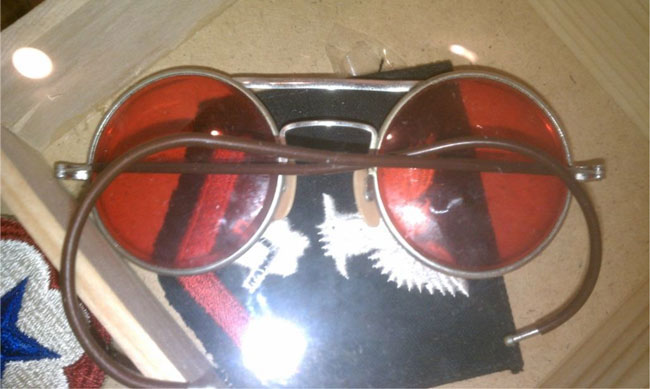Why Anti-Aircraft Gunners Wore Rochester Optical’s Red Lenses
Rochester Optical Manufacturing Company started operations in 1932, making glass lenses for the military. “Most likely they started making metal frames for the military in early ’40s to keep up with the military demand,” Ho said. “This began the path of innovations that led to our anti-aircraft gunners eyeglasses.”

|
| These red lens glasses made by Rochester Optical gave U.S. Army anti-aircraft gunners a special advantage in WWII. Courtesy of Rochester Optical
|
|
| |
Ho was referring to special glasses with red-tinted lenses that Rochester Optical made for the military. As an article in a 1941 newsletter called Science explained, the red lenses helped the gunners see the contrast between the sky and the flaming course of the machine gun tracer shells” they were firing at enemy planes.
Rochester Optical’s marketing team added, “Aviators also used these red lens glasses because it helped them when flying at night. When aviators did not have time to sit in perfect darkness before night-flying, they wore the red lens glasses to help their pupils dilate more quickly. The red-tinted lenses block all colors in the visible spectrum except red, and since the rods in your eyes aren’t sensitive to red, the glasses allow the rods in your eyes to adjust to darkness.”
|